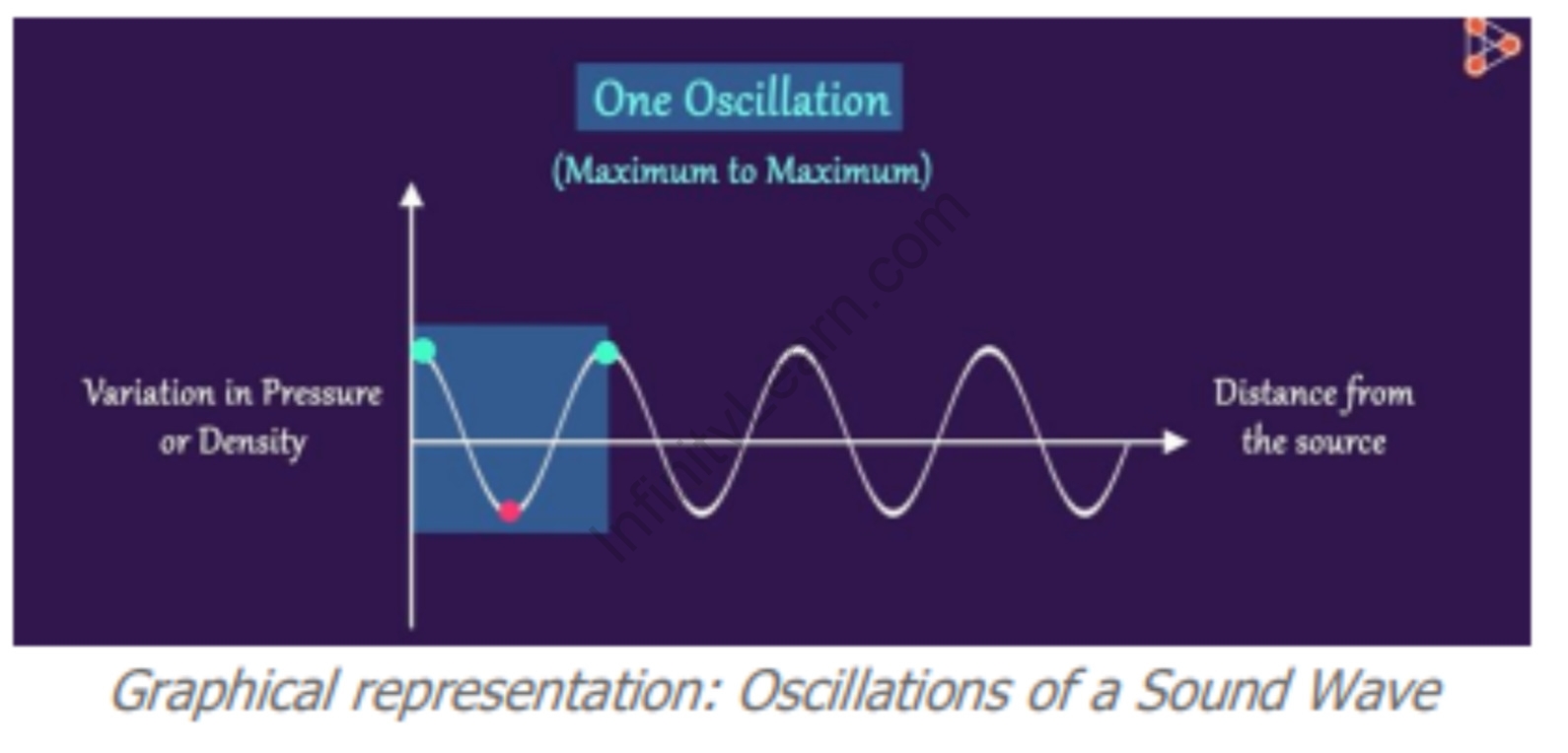Table of Contents
Frequency is a fundamental concept in physics and wave theory that describes the number of cycles or oscillations of a wave that occur in a given time. It is represented by the symbol “f” and is measured in hertz (Hz). The frequency formula relates the frequency of a wave to its period, which is the time it takes for one complete cycle.

The frequency formula is expressed as:
f = 1 / T
Where “f” represents the frequency and “T” represents the period of the wave. The period is the reciprocal of the frequency, meaning that the period is the time taken for one cycle to occur.
Unit of Frequency = s-1 OR Hz
To calculate the frequency of a wave, you can use the frequency formula by dividing 1 by the period. For example, if the period of a wave is 0.02 seconds, the frequency can be calculated as:
f = 1 / 0.02 s
f = 50 Hz
This means that the wave completes 50 cycles or oscillations in one second.
The frequency formula is applicable to various types of waves, including sound waves, electromagnetic waves, and mechanical waves. In each case, the frequency determines the pitch or tone of the sound, the colour of light, or the characteristics of the wave.
In addition to the frequency formula, it is also possible to calculate the period of a wave using the reciprocal of the frequency. This can be expressed as:
T = 1 / f
Both the frequency and the period are inversely related to each other. As the frequency increases, the period decreases, and vice versa.
Understanding the frequency formula is essential for analyzing and characterizing wave phenomena. It allows us to quantify the rate at which waves oscillate and provides a basis for studying wave behaviour, such as interference, resonance, and diffraction.
Solved examples on Frequency Formula
Example 1: A sound wave has a period of 0.01 seconds. Calculate the frequency of the sound wave.
Solution:
To calculate the frequency, we can use the formula:
f = 1 / T
Given that the period (T) of the sound wave is 0.01 seconds, we can substitute this value into the formula:
f = 1 / 0.01 s
f = 100 Hz
Therefore, the frequency of the sound wave is 100 Hz.
Example 2: An electromagnetic wave has a period of 2 × 10-7 seconds. Calculate the frequency of the electromagnetic wave.
Solution:
Using the frequency formula, we can find the frequency of the electromagnetic wave:
f = 1 / T
Given that the period (T) of the electromagnetic wave is 2 × 10-7 seconds, we substitute this value into the formula:
f = 1 / 2 × 10-7
f = 5 × 10^6 Hz
Therefore, the frequency of the electromagnetic wave is 5 × 10^6 Hz.
Example 2: A guitar string vibrates at a frequency of 440 Hz. What is its period?
Solution:
The frequency of the guitar string is given as 440 Hz. We can use the frequency formula to find its period:
f = 1 / T
T = 1 / f
Substituting the frequency into the formula, we get:
T = 1 / 440 Hz
T ≈ 0.0023 s
Therefore, the period of the guitar string’s vibration is approximately 0.0023 seconds.
Frequently Asked Questions on Frequency Formula
What is frequency?
Frequency is the number of cycles or oscillations of a wave that occur in a given time. It is a measure of how often an event or phenomenon repeats per unit of time and is typically represented in hertz (Hz).
How is frequency related to wavelength?
Frequency and wavelength are inversely related. As the frequency increases, the wavelength decreases, and vice versa. This relationship is described by the wave speed formula: v = fλ, where v is the wave speed, f is the frequency, and λ is the wavelength.
How is frequency measured?
Frequency is measured in hertz (Hz). One hertz represents one cycle or oscillation per second. Kilohertz (kHz), megahertz (MHz), and gigahertz (GHz) are commonly used for higher frequencies.
What is the difference between frequency and period?
Frequency and period are reciprocal quantities. Frequency measures the number of cycles per unit time, while the period measures the time it takes for one complete cycle. The period is the reciprocal of the frequency: T = 1/f.
How is frequency related to pitch in sound?
In sound, frequency is related to the pitch of a sound wave. Higher-frequency waves have a higher pitch, perceived as a higher musical note, while lower-frequency waves have a lower pitch. For example, a high-pitched sound has a higher frequency, such as a whistle, whereas a low-pitched sound, like a bass note, has a lower frequency.
What is the difference between frequency and amplitude?
Frequency and amplitude are two different characteristics of a wave. Frequency represents the rate of oscillation or cycles per second, while amplitude refers to the maximum displacement or height of the wave from its equilibrium position. Amplitude relates to the energy or intensity of the wave, while frequency relates to its speed or repetition rate.
Can humans hear all frequencies?
No, humans have a limited range of hearing. The average human hearing range is approximately 20 Hz to 20,000 Hz, with the ability to perceive higher frequencies diminishing with age. Frequencies below and above this range are inaudible to most humans.





